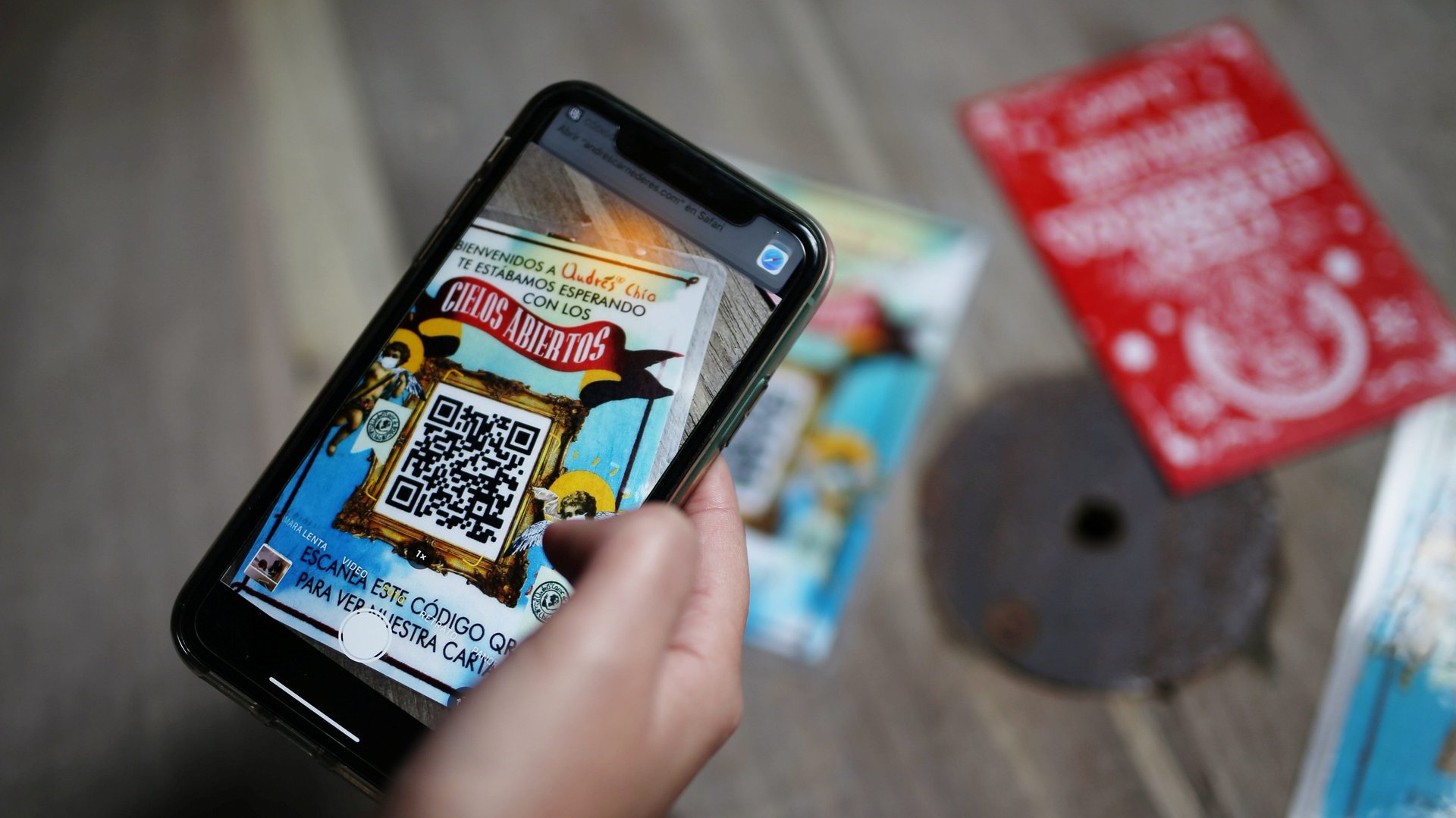It took a pandemic to make QR codes a global sensation
After a decade of mockery and dismissal, QR codes—those little black-and-white square patterns you scan with your phone to pull up a website—are finally having their moment.


After a decade of mockery and dismissal, QR codes—those little black-and-white square patterns you scan with your phone to pull up a website—are finally having their moment.
During the pandemic, when nobody wants to touch anything, reopened restaurants have replaced paper menus with QR codes (and used the digital patterns to rescue soda machines). PayPal and Venmo rolled out a touchless payment option for businesses powered by QR codes, and CVS quickly announced plans to roll them out at 8,200 stores by the end of the year.
Pharmaceutical companies are even developing Covid-19 testing apps that display users’ health status via QR codes, which could determine whether they can go back to work, walk into a building, or board a plane.
Of course, these developments aren’t so novel within China, where QR codes are ubiquitous as a tool for digital payments. Two thirds of the population was using them as far back as 2017. But for much of the rest of the world, the sudden proliferation of little black squares is unexpected vindication for a widely maligned technology.
QR codes (short for “Quick Response” codes) got their start in 1994, in the Japanese labs of a Toyota subsidiary named Denso Wave. The automaker needed an easy way to keep track of car parts on the assembly line, and the QR code offered a clear improvement over the barcode, which had been invented 42 years earlier. Barcodes store information in a series of one-dimensional lines, which can represent up to 80 characters of data. But standard QR codes, which store information in a two-dimensional field of squares, can hold about 100 times more data (enough storage space, in fact, to fit a simple version of the game Snake).
The codes stuck to industrial applications until 2010, when smartphones finally gained the ability to read them and translate them into web links. A wave of hype followed, predicting that QR codes would open a portal between the physical and digital worlds—augmented reality. Eager to position themselves as tech-savvy, companies began plastering squares on advertisements, buildings, and employee uniforms, urging consumers to scan them.
The only problem was, QR codes sucked.
In those early days, smartphone users had to download a bespoke app to scan QR codes, a big ask just to see some ad copy. Data connections weren’t as widespread or reliable as they are today, making it harder to follow the links wherever you found them. And when the site finally loaded, it was often just the desktop version of a company’s homepage, which looked terrible on phones.
By December 2011, comScore reported that just 20% of US smartphone users, 16% of Canadians, and 12% of Spaniards and Brits had used QR codes—and the numbers only dropped from there. The technology became a punchline, associated with lame, gimmicky marketing.
A Tumblr account cropped up to document the dumbest applications in the wild (e.g. QR codes printed on sneakers, QR codes to tell you when your melon is ripe, QR codes you could only scan if you stood directly on the subway tracks). The blog was crowned the “definitive compendium of a sad and horrible technology” by tech reporters at Gizmodo, who took special delight in dunking on QR codes.
While the technology was being roasted into oblivion in the US, it quickly caught on in China, where WeChat and AliPay adopted QR codes to fuel the rapid expansion of their mobile payments business. On a visit to China in 2014, Snapchat CEO Evan Spiegel was so amazed by the technology that he immediately assembled a team to create a branded version for his app, dubbed Snapcodes, which allowed users to easily add new friends. These soon caught on, appearing everywhere from business cards to the official White House website, and spawning copycats from Facebook, Twitter, Spotify, and Amazon.
The real breakthrough came in 2017, when updates to the iPhone and Android operating systems gave virtually all new smartphones the power to scan QR codes from their native camera apps—no special downloads required. Wired predicted the technology’s imminent coronation, declaring, “QR codes aren’t a failure from the past. They’re the future. For real this time.”
Still, data from QR manager Scanova showed a modest 7% increase from 2018 to 2019 in the number of US households that had used a QR code in the past year.
At the crest of a Covid-induced wave of QR codes, prognosticators are once again predicting that QR codes have finally arrived, for good this time. While it remains to be seen whether companies will find better uses for them or if consumers will lose interest after the pandemic passes, smartphones, web design, and cellular data have certainly advanced far beyond where they were when QR codes disastrously debuted to the public in 2010. Maybe this really is their moment.
(Even if it isn’t, enthusiasts can take heart in the fact that QR codes will certainly outlive us all, affixed to a few avant garde tombstones.)